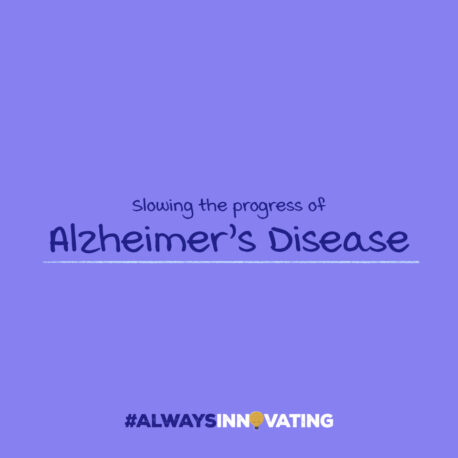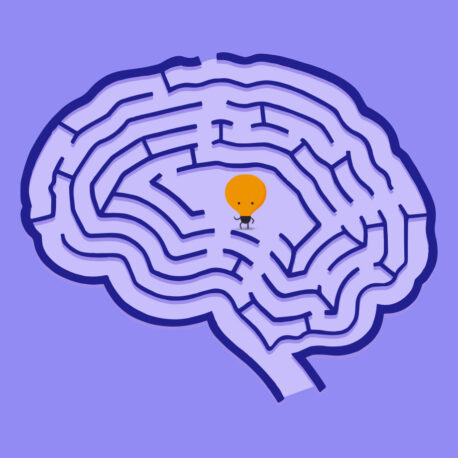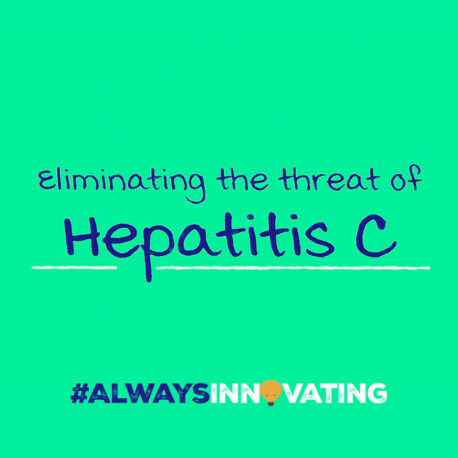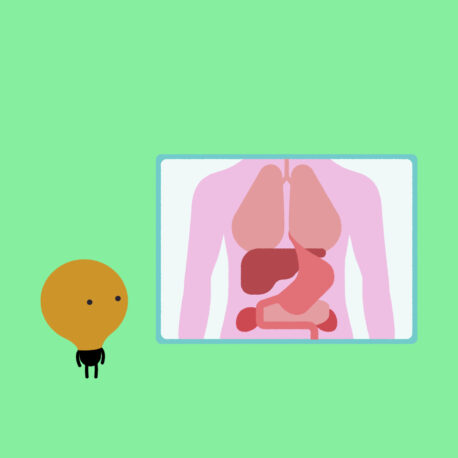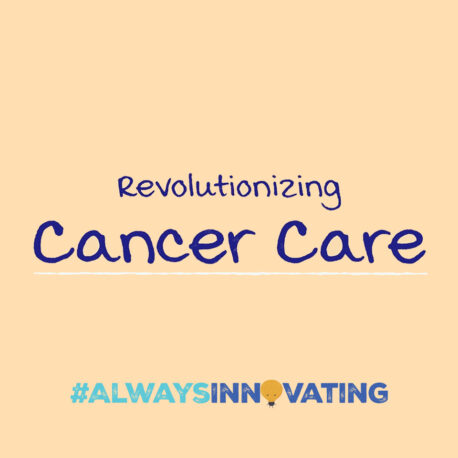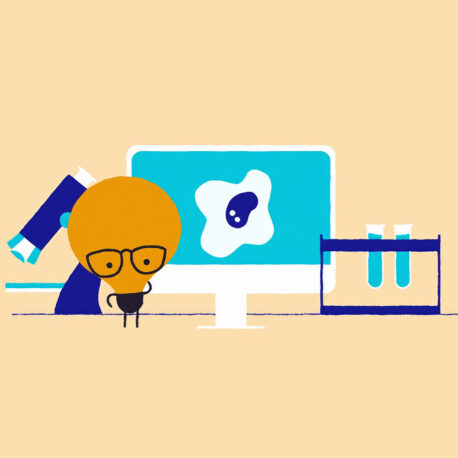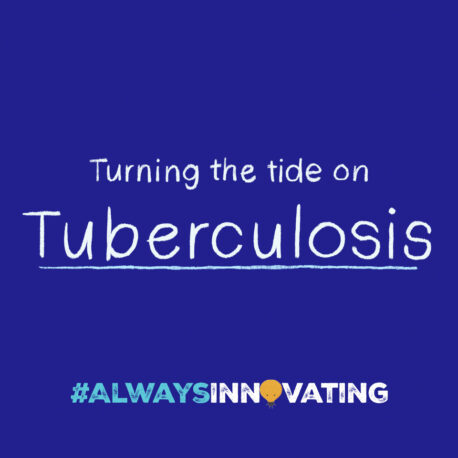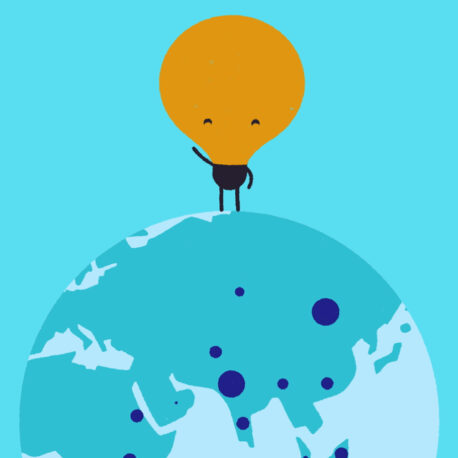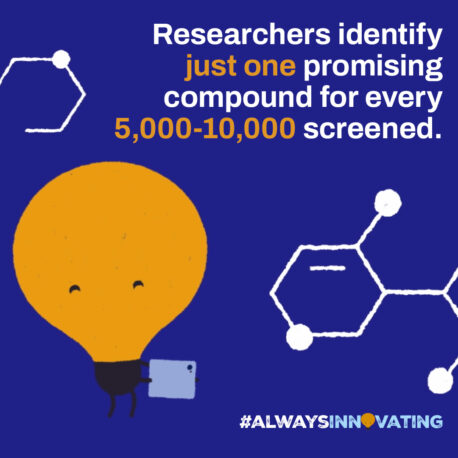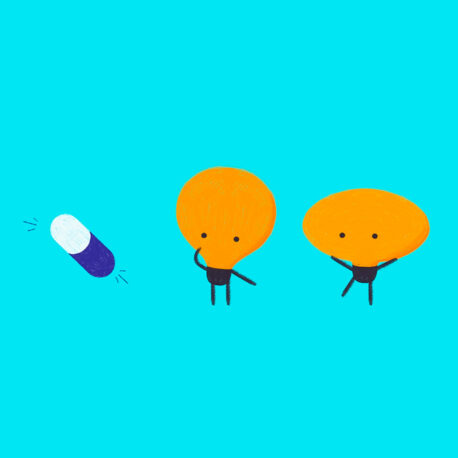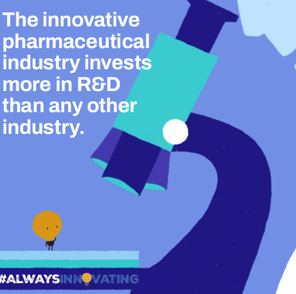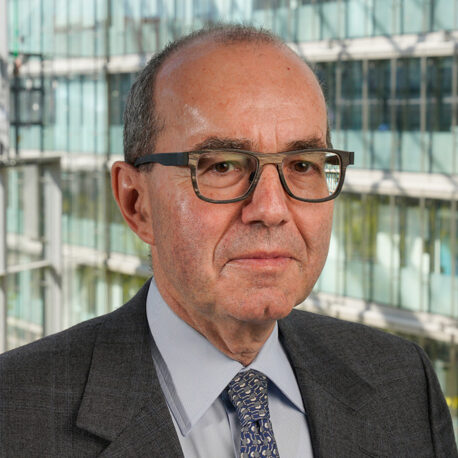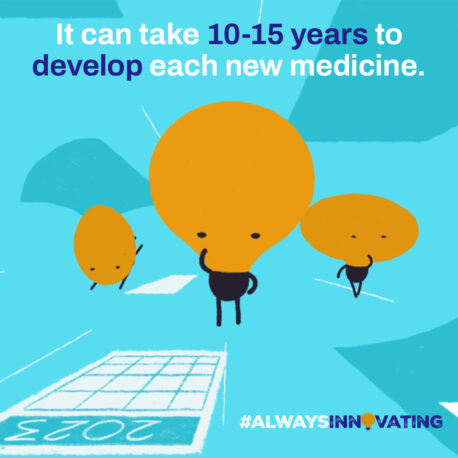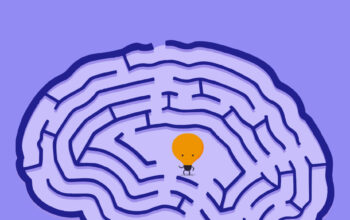#AlwaysInnovating: The pharmaceutical innovation journey
Pharmaceutical innovation – the core of our industry’s work – relies on pushing the limits of scientific knowledge to advance new medicines and vaccines for the benefit of people everywhere.

Overview
Whether it’s cancer, antimicrobial resistance, Alzheimer’s, or pathogens that could cause future pandemics, the world continues to face major global health challenges.
#AlwaysInnovating lifts the curtain on the innovation journey, revealing the knowledge, skills, collaboration, and perseverance needed to turn an idea into a medicine or vaccine that brings hope to people everywhere.
Where do scientific innovations come from?
Turning a scientific idea into a new medicine or vaccine requires significant expertise, time, and investment.
The innovative pharmaceutical industry consistently invests more in R&D than any other industry. In 2022, a total of 64 novel active substances (NAS) were launched globally, with over 6,147 products in active development from Phase 1 to regulatory submission.
Today, there are more than 9,000 medicines in development across all therapeutic fields, and 260 vaccines in the pipeline.
compounds screened to discover ONE candidate1
years needed to develop a new medicine or vaccine2
candidates at different stages of clinical development1
The innovation journey

Understanding the innovation journey
There is no guarantee of success in pharmaceutical innovation. On average, researchers identify one promising compound among 5,000–10,000 screened during pre-clinical development work before extensively testing during clinical trials to ensure efficacy and safety – a process that can take 10 to 15 years for a medicine or a vaccine.
Clinical trials can only start after a compound has passed rigorous pre-clinical development work, which involves laboratory testing (chemical, biological, pharmacological, and toxicological). It is only if these tests show favourable results that a pharmaceutical company can proceed to clinical trials in humans to evaluate the safety and efficacy of a medicine or vaccine. These Phase 3 clinical trials involve enrolling, monitoring, and retaining thousands of volunteers.
If clinical trials are successfully completed, independent regulatory authorities then review all the clinical trial data. They continue to monitor the medicine or vaccine throughout its lifetime. State-of-the-art manufacturing facilities are also inspected to ensure high manufacturing quality standards are in place.
A potential new medicine or vaccine could be rejected at any point in the development process. In fact, about 90% of candidates fail during clinical development. Failures and setbacks are part of the innovation process.

Learning from the innovation journey
Ideas that seem promising in early-stage studies may not work as hoped in large-scale trials, but researchers continue to work tirelessly to explore new scientific approaches while expanding their knowledge and understanding of how to prevent and treat diseases.
For example, the innovative pharmaceutical industry has spent decades investigating therapies for Alzheimer’s, and only today does it look like the very first disease modifying treatments may become a reality.
Sometimes scientific research that was intended for one disease can discover the potential to treat other diseases. We saw this in the research carried out for COVID-19 treatments and vaccines, where a medicine previously developed for Ebola was found effective to treat COVID-19, and the mRNA technology, which had been in research for decades to treat cancer, found its first application for COVID-19 vaccines.
Often a scientific advance in one area sparks many new developments as our collective scientific knowledge is advanced. A thriving ecosystem means that innovative new medicines are quickly followed by more options, giving us multiple tools to tackle a specific disease. For example, the Hepatitis C virus was first identified in 1989. Since then, we have developed new therapies at an incredible pace. Today, the latest treatments cure 95% of people in under 12 weeks.

Investing in the innovation journey
Medicines and vaccines are not discovered overnight. Turning an idea into a new medicine or vaccine takes time, investment, and very specialized expertise. To survive the journey that can take between 10 and 15 years, every idea needs incentives and investment.
This ranges from basic research through clinical development, to navigating the regulatory process, to building state-of-the-art R&D and production facilities, to sourcing raw materials and equipment, to building manufacturing operations around the world.
The discovery, development, manufacturing, and supply of new medicines is a team effort combining the talents of many individuals. Every day, three million people around the world are committed to developing and delivering medicines for serious unmet medical needs.
It also takes a significant investment. In 2022, the top 20 global pharmaceutical companies are estimated to have invested USD 139 billion on pharmaceutical R&D while the average cost of developing a new medicine rose to USD 2.3 billion.
The innovation ecosystem
Global health progress relies on a robust innovation ecosystem. The innovative pharmaceutical industry is an important part of the puzzle, playing a critical role in bringing life-saving and life-prolonging medicines and vaccines to individuals, improving both personal and public health outcomes.
Together with our partners – from academics, biotechs, and NGOs to regulatory agencies, patient groups, and healthcare providers – the innovative pharmaceutical industry is reimagining how medicines make the journey from lab to patients.
A connected and integrated approach is paramount to create a conducive environment that sustains medical innovation and supports sustainable access to the next generation of treatments and vaccines.
A strong innovation system supports the journey
In the last 10 years alone, the pharmaceutical industry has developed over 470 medicines to treat diseases such as cancer, cardiovascular diseases, and diabetes.
The industry has also developed vaccines to protect against more than 30 diseases, including recent vaccines to prevent meningococcal diseases, Ebola, malaria, COVID-19, and human papillomavirus (HPV).
A strong legal framework gives the journey behind medical developments like these a strong foundation. Intellectual property (IP) protection allows researchers to pursue new medicines by providing a framework that helps manage the risks, costs, and time involved in developing them. It helps drive innovation and continuous improvement of medicines and vaccines, while enabling pharmaceutical companies to collaborate and voluntarily share knowledge with trusted partners to move science forward and scale up the production of medicines and vaccines.
IP protection allows researchers to pursue new medicines by providing a framework that helps manage the risks, costs, and time involved in developing them. Tweet this
Without this framework, an already unpredictable journey would become even more uncertain.
If we have the right policies in place to help innovation thrive and deliver on its promise, together, we can unlock innovative solutions to some of the world’s most pressing health challenges, and bring fresh hope to people around the world.
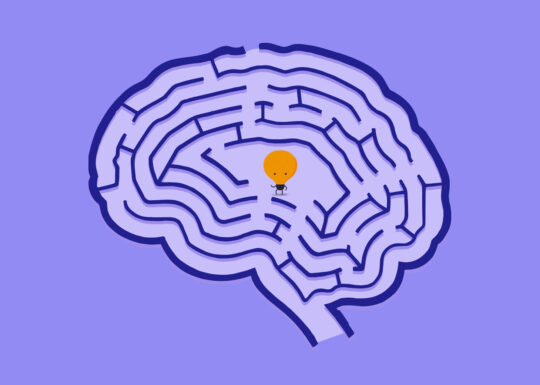
How innovative ideas are slowing the progress of Alzheimer's disease
Alzheimer’s Disease research may have experienced many setbacks over the years, but those very setbacks have provided us with crucial scientific learnings, forming the stepping stones to exciting new breakthrough treatments.
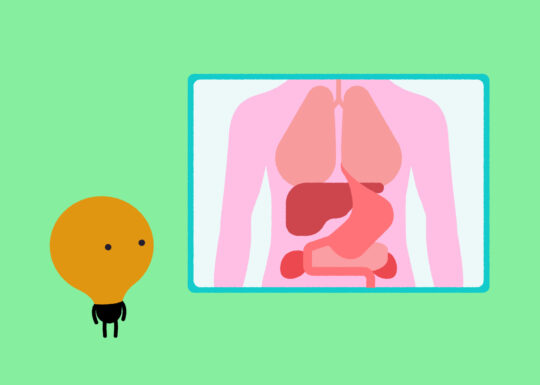
How innovative ideas are helping to eliminate the threat of hepatitis C
Innovation often comes in waves, set in motion by science and a competitive ecosystem. Such was the case when a cure was found for hepatitis C. It was followed by others in quick succession, giving us multiple tools to successfully tackle the virus.

How innovative ideas are revolutionizing cancer care
Decades of research and development means that we understand better now how cancer starts and progresses, as well as how it can be prevented and diagnosed. But innovation is only truly meaningful when it reaches patients in need. That’s why we are re-imagining cancer care through new precision therapies, bringing solutions to more people affected by different kinds of cancers.
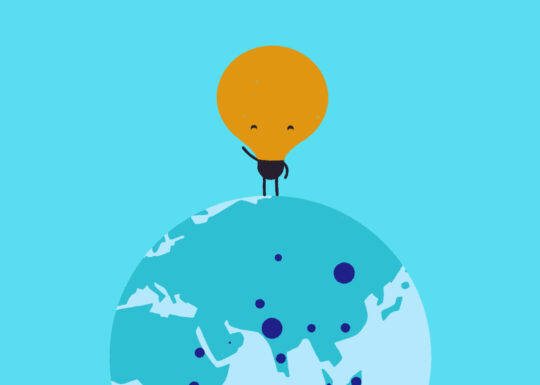
How innovative ideas are turning the tide on tuberculosis
Innovation can help overcome barriers to treatment. Working with partners, we’re developing TB medicines that are easier to administer in the most affected populations.
Every year, more than 10 million people fall ill with tuberculosis, resulting in 1.6 million deaths. Innovation can help more people access the tuberculosis treatment they need, prevent the disease from spreading and slow the rise of Multi-Drug Resistant Tuberculosis (MDR TB).
We are #AlwaysInnovating
References
- 1 https://www.ifpma.org/publications/facts-and-figures-2022-the-pharmaceutical-industry-and-global-health/
- 2 https://phrma.org/-/media/PhRMA_ClinicalTrial_FactSheet_Nationwide.pdf



